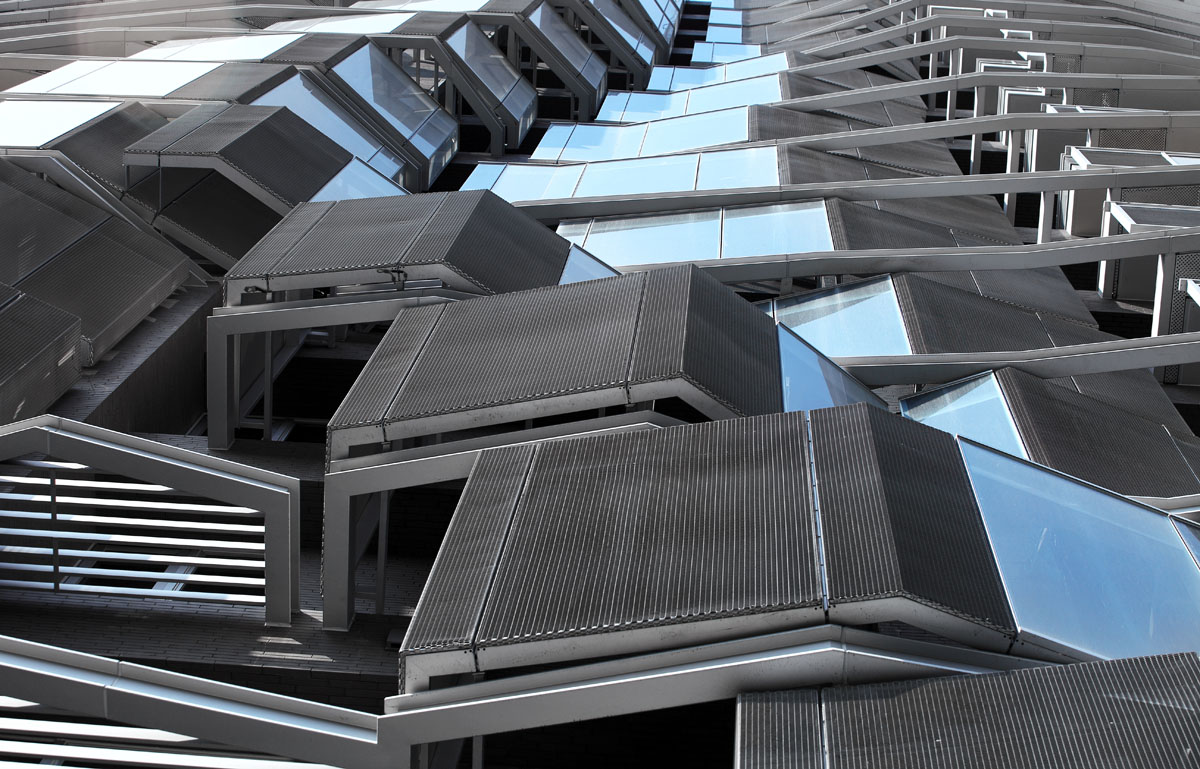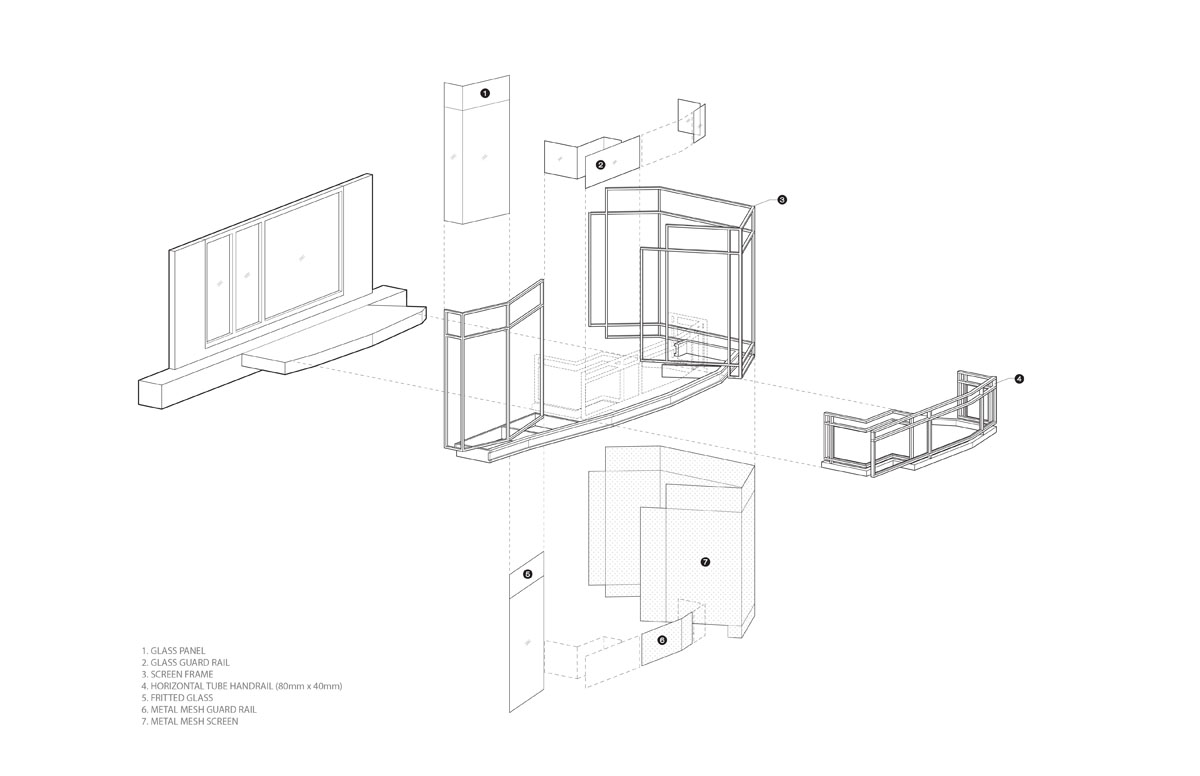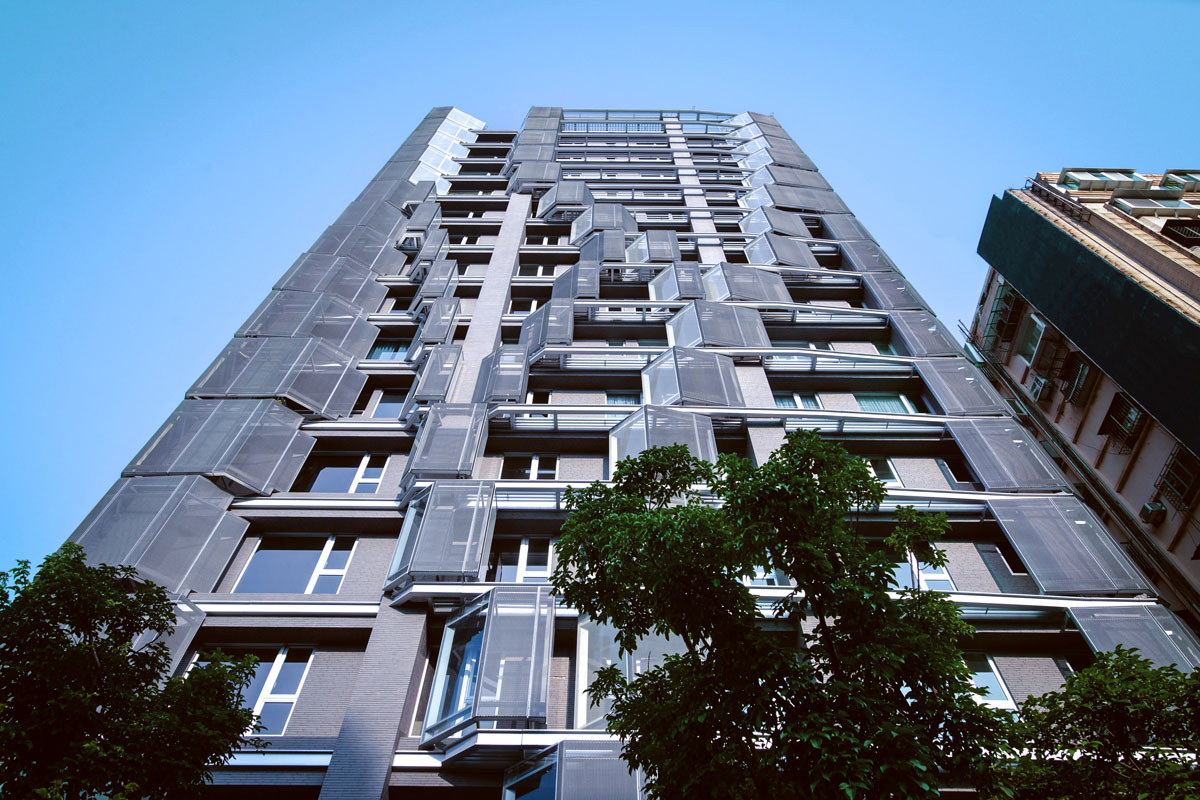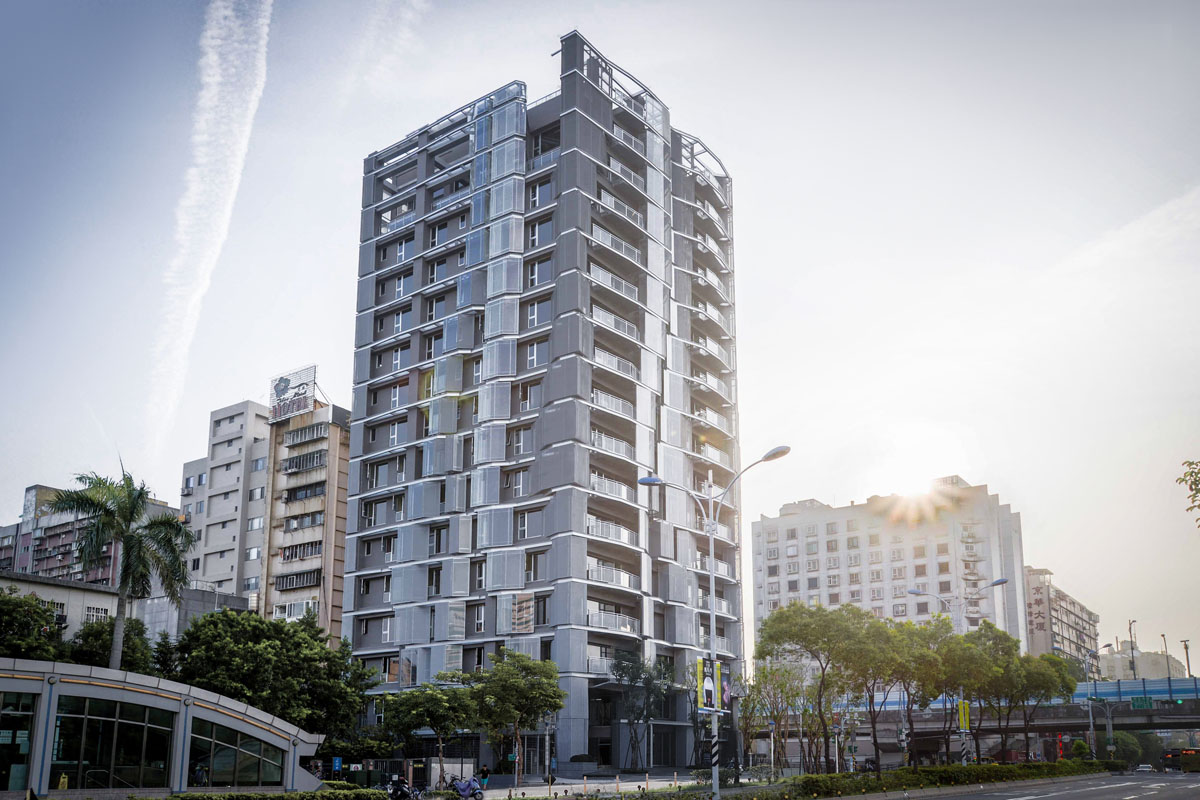
On the inside, Los Angeles–based Oyler Wu Collaborative’s 30-unit Monarch tower in Taipei, Taiwan, is pretty much a typical speculative multifamily project developed according to local building customs. Because of building codes, structural columns—typically measuring upward of three feet in thickness to account for the region’s strong seismicity—are not counted as part of floor-to-area ratio for these types of projects. As a result, the structural columns for these new developments are placed outside the building’s outermost facades in order to maximize internal floor area and leave unobstructed floor plates. The arrangement creates a vertically-striated exterior structural grid that, due to the massive columns, leaves a void where exterior balconies can be placed.

- Principal Architects
Dwayne Oyler; Jenny Wu - Design Team
Huy Le; Sanjay Sukie; Shouquan Sun; Yaohua Wang;Lung Chi Chang; Richard Lucero; Chris Eskew; Mike Piscitello - Photography
PoYao Shih - Client
JUT land Development - Location
Taipei, Taiwan - Date of Completion
2017 - System
projecting steel framed balconies - Products
bespokeexterior paneling assembly (expanded aluminum mesh; fritted glass; aluminum panels)
For the 15-story Monarch tower project, Oyler Wu utilized these spaces to create a lively facade that showcases a complex patchwork of extruded aluminum mesh, painted steel elements, fritted glass, and overhanging solid aluminum panel assemblies. The balconies are structured with light-gauge metal tube handrails infilled with glass panels, with the each balcony assembly wrapped in an aluminum tube screen frame that is filled in alternately with glass or mesh. The resulting balconies reflect the square-shaped building’s alternating exposures, growing to over eight feet in depth along the principal southern face with a shallower, five-foot-deep articulation on other facades.
“We wanted to insert dynamic variety into the Taipei apartment type,” Dwayne Oyler of Oyler Wu Collaborative said. He added that the unconventional project—the interiors of which were already designed by Jut Land Development’s in-house team of architects when Oyler Wu came on board—represented an unconventional way of working for the firm at a scale previously only explored via speculative research.
The balconies are structured with steel supports that were calibrated to account for seismic activity and then incorporated into the shifting design. The architects worked with the developer and future residents to envision a idiosyncratic strategy for deploying the mesh screens within this matrix, including using the material along bathroom and bedroom windows in order to maximize privacy in Taipei’s dense urban condition. The strategy was augmented with the projecting balconies, which shift position across the facade in conjunction with the panels in order to accommodate predetermined—and non-negotiable—window and door openings that came with the developer-driven design.

Oyler Wu also designed the building’s ground floor lobby and public spaces. Jenny Wu, principal at the firm, explained that her team was “trying to make the public spaces on interior feel like an extension of the exterior” aesthetically as well as functionally.
“There’s nothing quite like it in Taipei,” she said.





